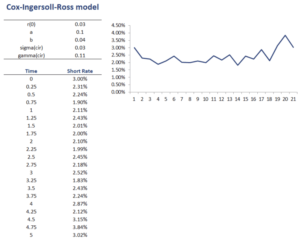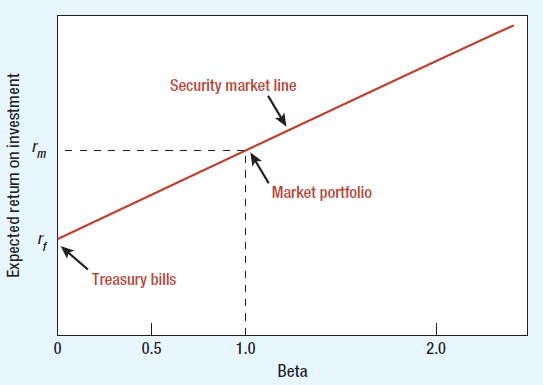Content

Simply put, it shows how successful a 1% increase in advertising spend is for raising sales in a specific sector when all other factors are the same. Advertisement elasticity of demand is also known as the promotional elasticity of demand. It quantifies the change in quantity demand as a result of a change in advertisement expenditure. More specifically, it can be defined as the promotional change in quantity demanded of a product due to a proportional change in advertisement spending by the business firm.
The primary use for advertising elasticity of demand is making sure advertising and marketing campaign expenses are justified by their returns. A price comparison of AED and price elasticity of demand (PED) can be used to calculate whether more advertising would maximize profit. The advertising elasticity of demand tells you how responsive your vending machine soft drink sales are to the change in advertising expenditures. Suppose the advertisement expenditure of an organizationincreases from ₹25,000 to ₹60,000.

Consequently, the demand of the organization’s products increases from 40,000 units to 70,000 units. Advertising can increase awareness of a product or service, producing an increase in sales. This does not necessarily reflect an increase in its price elasticity of demand because price elasticity represents a change in demand with an increase in price. On the other hand, if the product is well- established in the market, then the purpose of advertisement would be to attract new customers and create additional demand. In such a case, proportional increase in demand is less than the proportional increase in advertisement expenditure.
What is Advertisement Elasticity of Demand? Formula, Example
The effectiveness of elasticity of demand decides the sales of an organisation. Thus, is it important for the organisation to determine how advertisements affect its sales. The advertisement elasticity of demand is a degree of responsiveness of a change in the sales of a product with respect to a proportionate change in advertisement expenditure. It is difficult to measure demand because you’d have to know what people want at the individual level and what they would pay. Thus, the change in sales is commonly used to replace change in demand, causing AED not to represent its intended measurement—whether a change in advertising affected a change in demand. A good example of this is when a specific beer company advertises its product, which compels a consumer to buy beer, but not simply the specific brand they saw advertised.
This evolution has received strong support from concurrent revolutions in data collection and research techniques. This article outlines the formalization of the marketing discipline and proposes steps that will pave the way for future developments in marketing, toward what I call “distinguished marketing”. Advertisement elasticity of demand is influenced by advertisements being produced in the market by competitors. In a highly competitive market structure, the effectiveness of the advertisement of an organisation is determined by the amount spent and effectiveness of advertisements of its competitors. The concept of advertisement elasticity of demand is an important aspect especially while making decisions related to promotional activities. Demand and sales are two different metrics—sales are what was purchased, whereas demand is what is desired.

Increasing demand for marketing accountability requires an efficient allocation of marketing expenditures. Managers who know the elasticity of their marketing instruments can allocate their budgets optimally. Meta-analyses offer a basis for deriving benchmark elasticities for advertising. Although they provide a variety of valuable insights, a major shortcoming of prior meta-analyses is that they report only generalized results as the disaggregated raw data are not made available. This problem is highly relevant because coding of empirical studies, at least to a certain extent, involves subjective judgment. For this reason, meta-studies would be more valuable if researchers and practitioners had access to disaggregated data allowing them to conduct further analyses of individual, e.g., product-level-specific, interests.
Income Elasticity of Demand
It means a certain percentage change in the promotional expenditure by the business firm brings a change in sales volume by a lower percentage then it is the case of advertisement elasticity of demand less than one. It is the situation in which the percentage change in quantity demand is equal to the percentage change in advertisement expenditure of the firm. If a certain percent increase in advertisement expenditure brings an equal percentage change in sales volume of the business firm then promotional elasticity is equal to one. It means a relatively lower percentage change in promotional expenditure beings a higher percentage increase in the quantity demand of a product.
However, the increase in sales is not always the same; it differs at all levels of the total sales. Advertisement elasticity of sales refers to responsiveness of sales with proportionate or percentage change in advertisement expenditure. Every organisation spends a certain amount on advertisement and other promotional activities with an aim to create awareness among customers and boost sales.
Some use demand to refer to the price point at which consumers will buy a product, but again, this is difficult to determine unless surveys are used. The goal of this task is to determine the advertising elasticity of the company and compare it to its peer group. Conversely, if a product has a high PED, an increase in price will result in lower consumer demand. Consumers will shift their purchases to substitute products with a lower price point, or they may go without the product entirely. This will often be the case with optional or discretionary purchases that a consumer can do without. The owner of an Italian restaurant has just been notified by her landlord that the monthly lease on the building in which the restaurant operates will increase by 20 percent at the beginning of the year.
Does Advertising Lower Elasticity?
So, it is the ratio of the percentage change in the demand for a commodity with the percentage change in the advertisement expenditure as a promotional expenditure. Following is the formula to measure the coefficient of advertisement elasticity of demand. While advertising elasticity of demand measures how advertising impacts the demand for products or services, price elasticity of demand (PED) measures how the price of a good or service impacts demand. Demand response to price fluctuations can be deemed as elastic or inelastic depending upon consumer reaction to the changing prices.
- The more the effective advertisement of competitors, lower the sales of the organization.
- This article outlines the formalization of the marketing discipline and proposes steps that will pave the way for future developments in marketing, toward what I call “distinguished marketing”.
- If a certain percent increase in advertisement expenditure brings an equal percentage change in sales volume of the business firm then promotional elasticity is equal to one.
- This will often be the case with optional or discretionary purchases that a consumer can do without.
For example, suppose the price of a product increases significantly, but consumers continue to buy the product at the same levels as before despite the price increase. The price elasticity of demand is low or inelastic (that is, it doesn’t change or stretch). Whether prices are high or low for that particular product, consumers continue to demand the product and their buying habits stay about the same. Goods that are basics required for survival, such as food or prescription drugs, are examples of products with inelastic demand. The advertising elasticity of demand measures the responsiveness of a good’s demand to changes in spending on advertising. The advertising elasticity of demand measures the percentage change in demand that occurs given a 1 percent change in advertising expenditure.
What Is Advertising Elasticity of Demand (AED)?
Advertising elasticity of demand (AED) measures a market’s sensitivity to increases or decreases in advertising saturation. Advertising elasticity measures an advertising campaign’s effectiveness in generating new sales. It is calculated by dividing the percentage change in the quantity demanded by the percentage change in advertising expenditures. A positive advertising elasticity indicates that an increase in advertising leads to a rise in demand for the advertised goods or services. Advertising elasticity of demand (AED) is a measure of a market’s sensitivity to increases or decreases in advertising saturation.
We are the first to address this gap by providing (1) an advertising elasticity database (AED) and empirical generalizations about advertising elasticities and their… Determining the effectiveness of advertising is a core part of any small business’s marketing strategy. That’s often easier said than done, as it’s difficult to tie advertising to sales in a direct line unless everything else remains constant.
Generally, at the time of a new product launch in the market, the advertisement elasticity of demand is greater than unity. This is because at that time the aim of the advertisement is to create awareness of the product among customers. Advertising elasticity of demand is a measurement purported to demonstrate the effect advertising has on a market.
Thus, AED may not be the most accurate measure of effectiveness of increase in advertising expenditure. Many products and services have a set price elasticity, but others are more elastic. Advertising doesn’t affect a product’s price elasticity; it affects awareness and sales. Luxury goods have an income elasticity of demand, which means that as people’s incomes rise, the demand for luxury goods increases as well. In a highly competitive market, the effectiveness of advertisement of an organization can be determined by the effectiveness of advertisement of its competitors. The more the effective advertisement of competitors, lower the sales of the organization.
However, she is now considering raising her prices by 20 percent to offset the increase in her monthly rent. For example, a commercial for a fairly inexpensive good, such as a hamburger, may result in a quick bump in sales. On the other hand, advertising for a luxury item — such as an expensive car or piece of jewelry — may not see a payback for some time because the good is costly and is less likely to be purchased on a whim. The major types or degrees of advertisement elasticity of demand can be briefly explained below. While this is a good way to estimate expected rise in advertising costs for growth in demand or the expected growth with rise in expense toward advertising, this is not the most accurate way. This ratio assumes that several other factors that may affect demand are constant, which cannot be the case in real life.